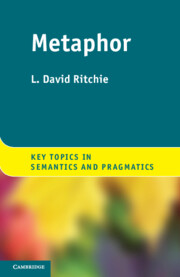Book contents
- Frontmatter
- Contents
- Figures
- Acknowledgments
- 1 Introduction
- 2 Understanding metaphors
- 3 Categorization and relevance
- 4 Conceptual metaphors
- 5 Perceptual simulation
- 6 Metaphors and framing effects
- 7 Language play
- 8 Metaphors in conversation
- 9 Metaphors in politics
- 10 Metaphors in literature
- 11 Closing reflections
- Glossary
- Bibliography
- Index
10 - Metaphors in literature
Published online by Cambridge University Press: 05 February 2013
- Frontmatter
- Contents
- Figures
- Acknowledgments
- 1 Introduction
- 2 Understanding metaphors
- 3 Categorization and relevance
- 4 Conceptual metaphors
- 5 Perceptual simulation
- 6 Metaphors and framing effects
- 7 Language play
- 8 Metaphors in conversation
- 9 Metaphors in politics
- 10 Metaphors in literature
- 11 Closing reflections
- Glossary
- Bibliography
- Index
Summary
But, soft! What light through yonder window breaks?
It is the east, and Juliet is the sun.
(Romeo and Juliet, Act 2, Scene 2)“Juliet is the sun” has been frequently discussed in debates about metaphor theory, often without any reference to the scene in which it appears (e.g. Searle, 1993). Ignoring the context leaves the imaginations of theorists free to invoke whatever characteristics of the sun they wish as a basis for interpretation – usually its light or its heat. Even the immediate lines in which “Juliet is the sun” appears provide sufficient evidence to rule out heat and focus the interpretation on light, but it is important to look beyond just these two lines. In Scene 1, Romeo’s friends Benvolio and Mercutio find Romeo in the Capulets’ garden, remind him of his passionate love for Rosaline, and tease him about it. They depart, and Romeo speaks:
He jests at scars that never felt a wound.
But, soft! What light through yonder window breaks?
It is the east, and Juliet is the sun.
Arise, fair sun, and kill the envious moon,
Who is already sick and pale with grief
That thou her maid art far more fair than she.
From these lines it is apparent that what is transferred from sun to Juliet is much more than either “heat” or “light.” More important to understanding these lines is the celestial relationship of sun and moon. By transferring this astronomic relationship onto the comparison of Juliet with Rosaline, Romeo answers his friends’ teasing about his previous infatuation with Rosaline, compares Rosaline unfavorably to Juliet, and entreats Juliet (the sun) to “kill the envious moon” (overcome his previous infatuation with her rival, Rosaline). In the following lines Romeo further develops the metaphorical mapping of Juliet onto light.
- Type
- Chapter
- Information
- Metaphor , pp. 186 - 200Publisher: Cambridge University PressPrint publication year: 2013
- 1
- Cited by



